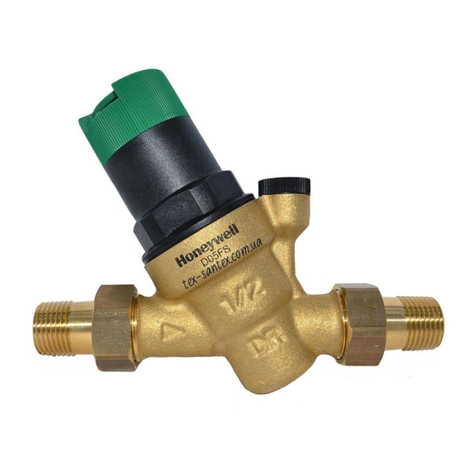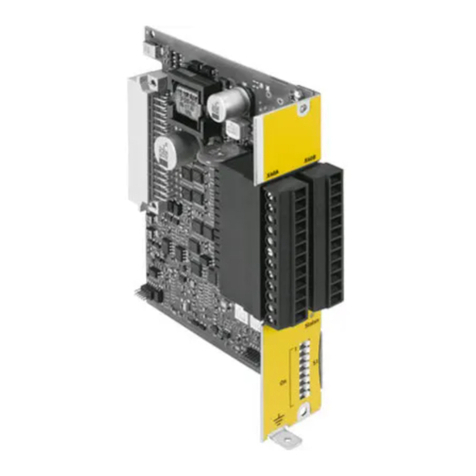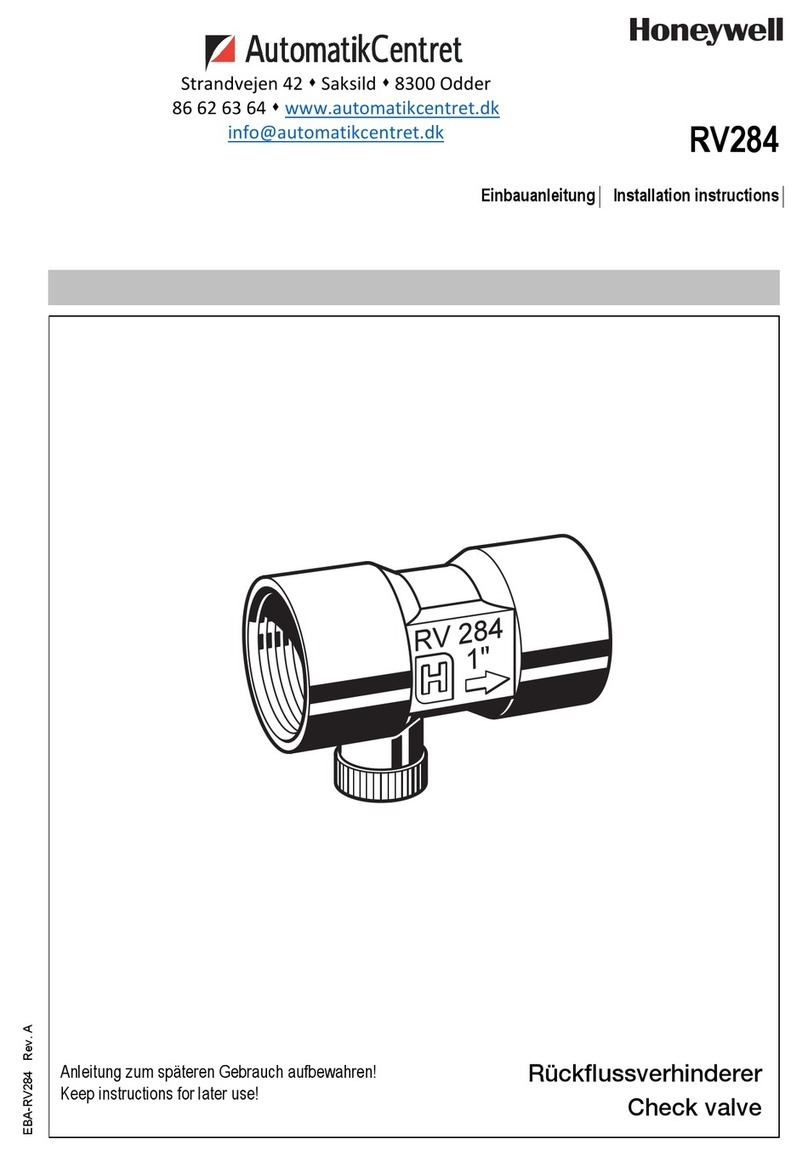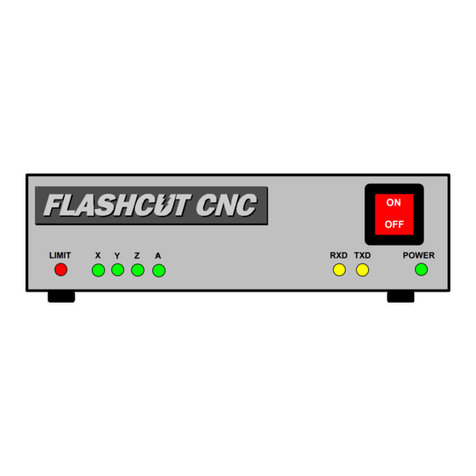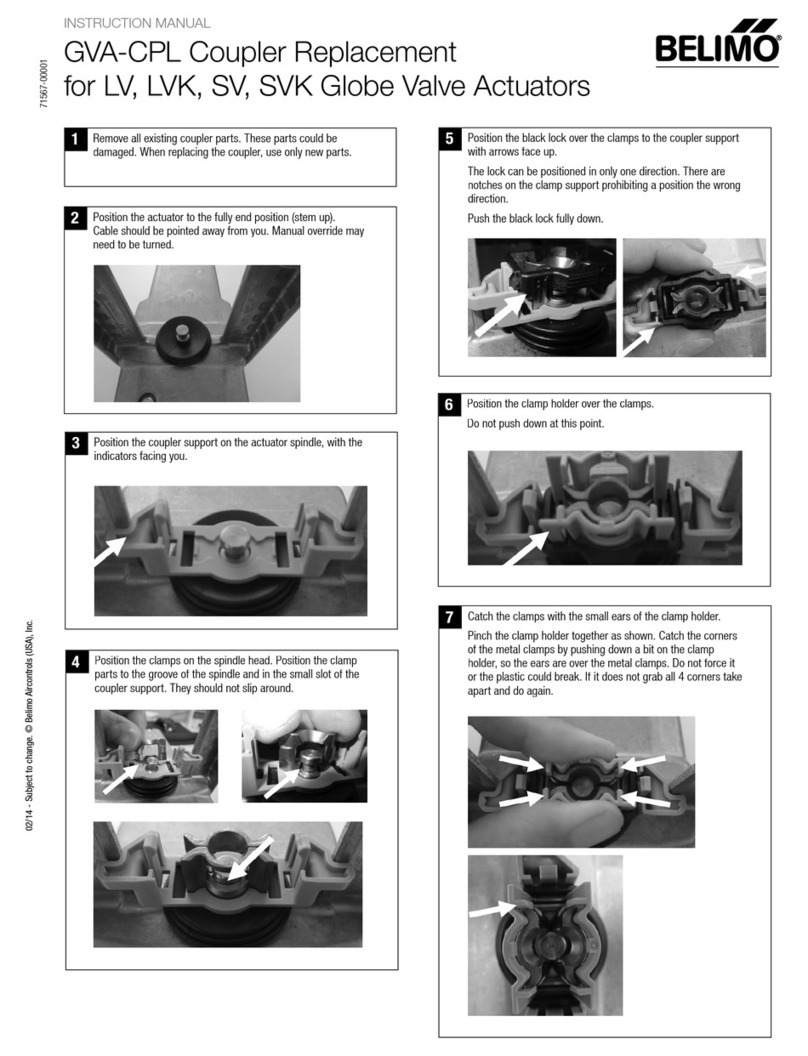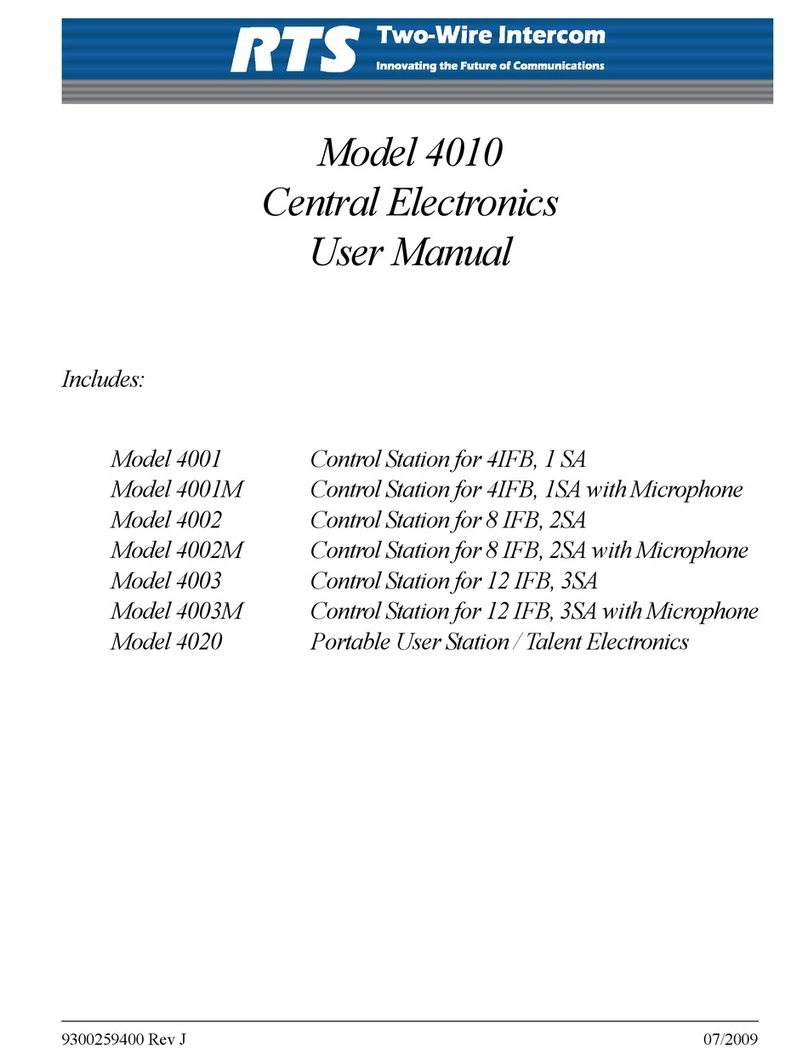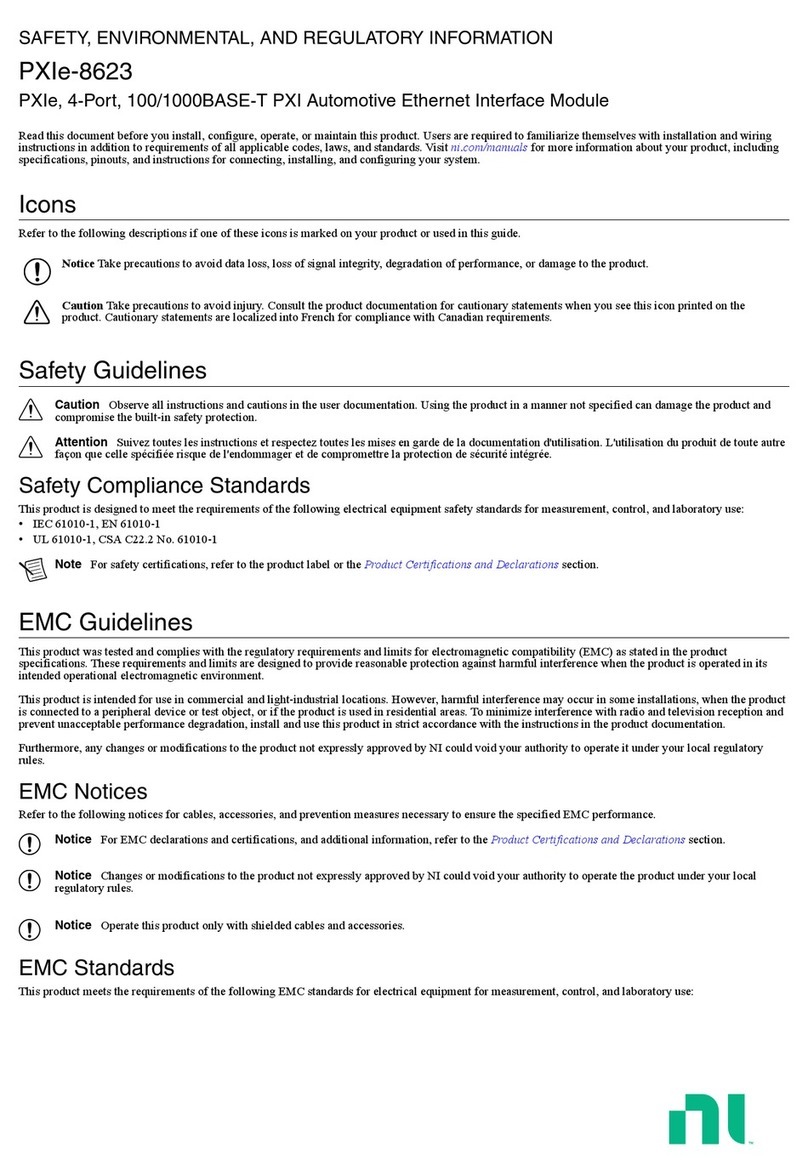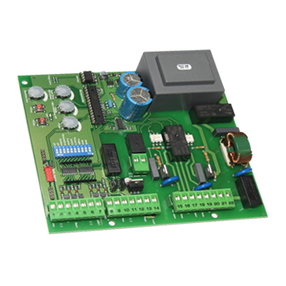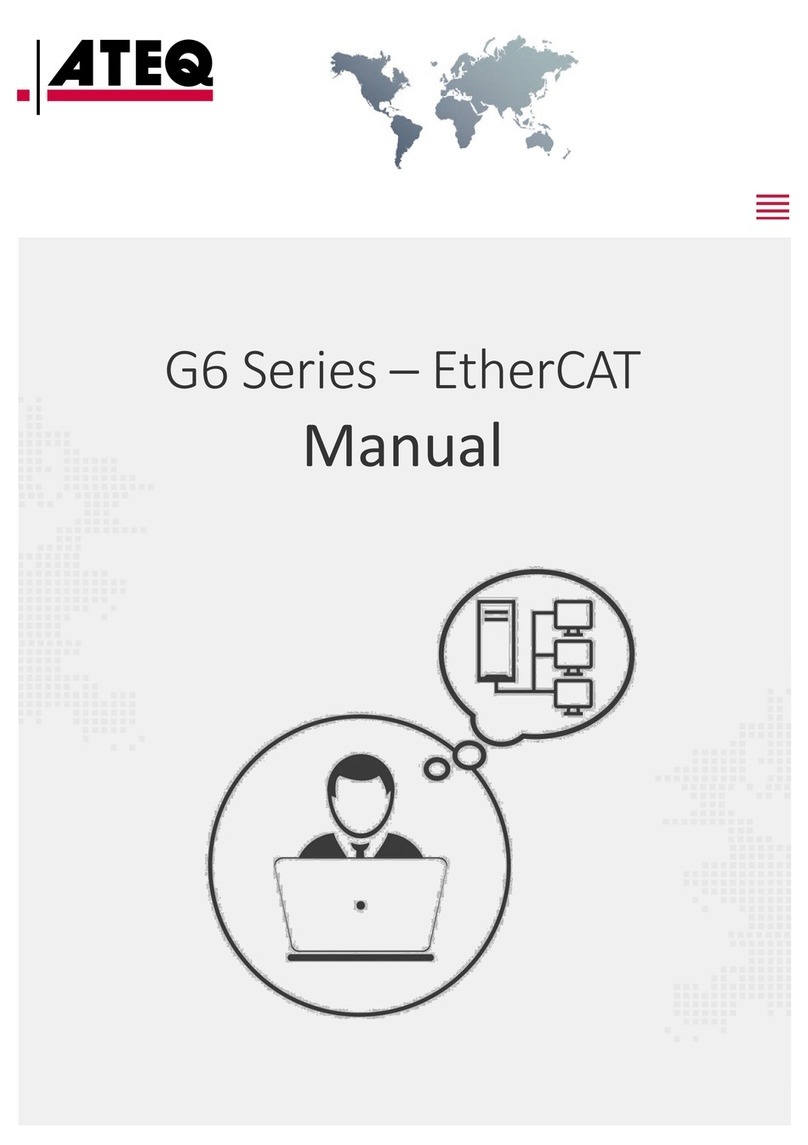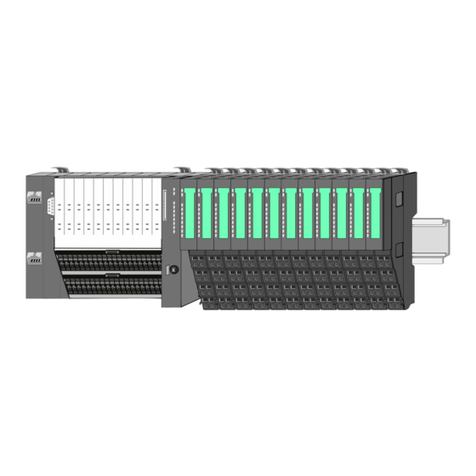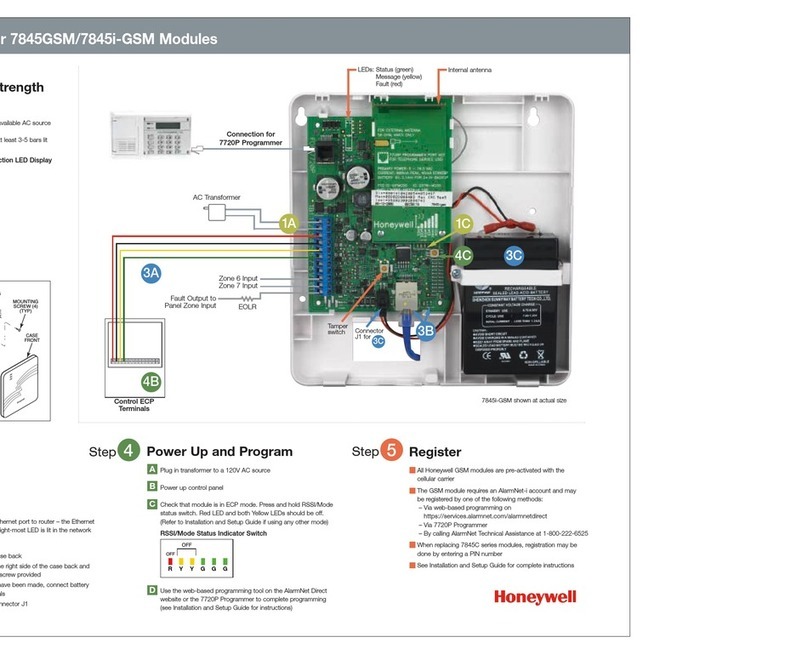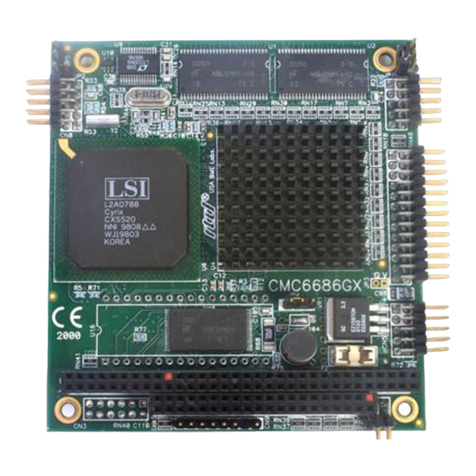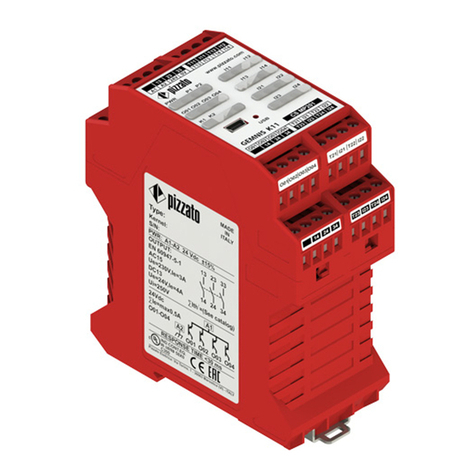Bogobit Bremsmodul Oneway User manual

Bogobit Bremsmodul Oneway – Manual
bogobit Bremsmodul Oneway · 2011-12-29 page 1 / 11

1 Introduction
Please read the instructions completely before using the product Observe all operating and safety
instructions!
The names of companies and products are trademarks of the respective owners All rights re-
served
2 Intended Use
The Bogobit Bremsmodul Oneway is a brake module for digitally controlled model railways The
module generates a “brake voltage” that is applied to the track depending on the aspect of a sig-
nal This lets locos brake smoothly if they are equipped with a suitable decoder It can be used on
model layouts with center stud tracks (Märklin H0), and for certain applications also with two-rail
tracks It can be used on digitally control model railways using the Märklin/Motorola/mfx protocol
and, depending on decoder characterstics, also with the DCC protocol
This product is no toy It is not suitable for children up to 14 years of age
Any use other than that described before is not permitted
The product may not be modified or reassembled
3 Safety Instructions
3.1 General
In case of damage incurred by disregarding these operating instructions, the warranty claim is void
Liability for any and all consequential damage is excluded!
We do not assume any liability for damage to property or personal injury caused by improper use
or the failure to observe the safety instructions! The warranty is voided in these cases
•For safety and licensing reasons (CE), it is not permitted to change or modify the product
Only use original or equivalent replacement parts for repair
•Ensure that all electrical connections and connection cables conform to the regulations and
comply with the operating instructions
•Upon sudden change of climatic conditions (e g transfer from a cold place to a warm
room) water may condense on the device, which may lead to damage Allow approx
2 hours to acclimate before powering on the device
•Do not operate the device near easily inflammable objects, liquids or gases Danger of ex-
plosion!
•Do not expose the device to high temperatures, strong vibrations, high humidity or chemic-
ally aggressive environment
•Operate the device only in dry indoor rooms (below 80 % humidity, non condensing) and at
normal room temperature (0 °C to 40 °C)
•Do not operate the device unattended
bogobit Bremsmodul Oneway · 2011-12-29 page 2 / 11

•When in doubt about safety, or the connection or operation of the device, which is not ex-
plained in these operating instructions, please contact us or a recognized expert
3.2 lectrical Safety
•Operate the module only with low voltage according to the specifications in the technical
data chapter Only use power supplies, such as transformers or digital control stations, that
are certified for use in model railway applications Connection of higher voltages (e g 230 V
mains voltage) is not permitted, also not on relay contacts There is danger to life through
an electric shock and a risk of fire!
•Adhere to the limits on maximum allowable current according to the specifications in the
technical data chapter Exceeding the limits leads to overload and destruction of the device
and bears the risk of fire or electric shock
•Switch off the power supply before working on the electrical connections
•Pay attention to appropriate wire cross sections (rule of thumb: 0,1 mm² per 1 A maximum
possible current, e g 0,5 mm² cross section for 5 A maximum current)
3.3 Heat Generation
Electronic components on the product may heat up significantly during operation
•When mounting the product, ensure sufficient air circulation around the device to prevent
heat build-up and overheating This especially applies when installing the board in a hous-
ing
•When mounting the product, keep sufficient distance to heat sensitive and inflammable ob-
jects (e g wood or plastic surfaces, cable insulation)
•When touching the product, there is danger of skin burn
4 Function of the bogobit Bremsmodul
4.1 General Function
The Bogobit Bremsmodul Oneway is a brake module for digitally controlled model railways The
module generates a “brake voltage” that is applied to the track depending on the aspect of a sig-
nal This lets locos brake smoothly if they are equipped with a suitable decoder
With the Bogobit Bremsmodul Oneway the braking prototypically happens only in one driving dir-
ection So, if the loco approaches the signal from behind, it continues to drive along To detect the
driving direction, the track is divided into two consecutive sections, whose occupancy is detected
by the brake module through a current sensor In summary:
Operational mode 1 – e g on free track:
The brake module is used at one signal with braking in one direction
If station tracks are passed in both directions, a signal is placed at each end of the track One
Bogobit Bremsmodul Oneway can observe the signals at both ends and brake an approaching train
bogobit Bremsmodul Oneway · 2011-12-29 page 3 / 11

in either direction at its corresponding exit signal The module thus combines two directional brake
modules in one device This requires the track to be divided into two or three consecutive sections
Operational mode 2 – track in a station:
The brake module is used at two signals with braking in either direction
On model layouts using center stud tracks (Märklin H0), the Bogobit Bremsmodul Oneway can be
used in both operational modes On layouts with two-rail tracks it can be used in mode 1 (at one
signal); the use in mode 2 (station track with two signals) is possible on two-rail track only if the
loco decoders support “Brake on DC” independently from track polarity
The Bogobit Bremsmodul Oneway kit may be built in two hardware versions:
•The version “Oneway Station” supports both operational modes
•The version “Oneway Simplex” only supports mode 1 (at one signal)
The version Oneway Station is the full featured version On the Oneway Simplex some electronic
components are left out as this version only supports one signal signal input and two instead of
three track sections
The brake voltage is basically just negative DC voltage This working principle is known to märklin
users as the "märklin brake module" and to DCC users as "brake on dc" It works with most of the
original märklin decoders and most compatible decoders It also works with many DCC decoders,
some of which need special configuration (CV programming) to support it
In some DCC decoders the voltage polarity is evaluated to achieve direction dependent braking
Thus, for two rail track applies: From the driver's perspective when facing the signal, the right rail
of two rail track is equivalent to the center studs of Märklin three-rail track
The brake voltage is output through an electronic current-limiting circuit Therefore, when driving
over a track isolation gap, no short circuit occurs and there is no disruption of service
bogobit Bremsmodul Oneway · 2011-12-29 page 4 / 11

5 Connection and Operation
5.1 Handling
The product consists of sensitive electronic components Improper handling may destroy them
Prior to handling the board, please discharge yourself from electrostatic charge To do this, touch a
metal object (earthed), e g a metal PC casing Try to touch the board only at the edges and avoid
touching any electronic components or copper routes on the board
5.2 Mounting
Mount the module properly to the model railway framework The module has holes with 3 mm
diameter for mounting Use of wood screws with 3 mm diameter and a flat pan head is recommen-
ded Use spacers (little plastic tubes) between circuit board and mounting surface Tighten the
screws carefully, so that the circuit board does not warp Also consider the instructions related to
heat generation in chapter 3 3
5.3 Configuration of the Operational Mode (DIP Switches)
The module has three DIP switches These configure the operational behaviour
In position “Off” the switch lever is in the left position near the number
In position “On” the switch lever is in the right position near the text ON
1O
N
Principal illustration of the DIP switches, all switches in position Off
2
3
The function of each switch is as follows:
Switch Function
1 Polarity of the signal inputs:
Off: Voltage is applied if the signal shows red (set-up for signals with LEDs)
On: Voltage is applied if the signal shows green (signals with internal switch)
2 Braking starts in the first or last track section:
Off: Braking starts in the last section (typical for mode 2 – station track)
On: Braking starts in the first section (typical for mode 1 – one signal)
3 Substitute for an unused signal input S3 (mode 1):
Off: Signal input S3 is connected to a signal (mode 2)
Off: Signal input S3 is not connected, DIP switch 1 is Off
On: Signal input S3 is not connected, DIP switch 1 is On
bogobit Bremsmodul Oneway · 2011-12-29 page 5 / 11

5.3.1 xamples of DIP Switch Settings
1O
N
xample 1: one L D signal (uses connections S1, B1, B2)
- operational mode 1 – one signal, braking in one direction
- signal has LEDs, the voltage of the red LED is connected to S1
- braking starts in the first section (B1)
2
3
Variant of example 1: If braking shall start at the second section (B2), then switch 2 is Off
1O
N
xample 2: one signal with internal contact (uses connections S1, B1, B2)
- operational mode 1 – one signal, braking in one direction
- signal has an internal switch, a switched voltage is connected to S1
- braking starts in the first section (B1)
2
3
Variant of example 2: If braking shall start at the second section (B2), then switch 2 is Off
1O
N
xample 3: two L D signals (uses connections S1, S3; B2, B1, B3)
- operational mode 2 – two signals, braking in two directions
- signals have LEDs, the voltage of the red LED is connected to S1 or S3 resp
- braking only in the last section (B2 or B3 resp )
2
3
Annotation to example 3: Instead of three track section in sequence B2–B1–B3, also the variant
with two sections B2–B3 can be used
1O
N
xample 4: two signal with internal contacts(uses connections S1, S3, B2, B1, B3)
- operational mode 2 – two signals, braking in two directions
- signals have an internal switch, a switched voltage is connected to S1 or S3
- braking only in the last section (B2 or B3 resp )
2
3
Annotation to example 4: Instead of three track section in sequence B2–B1–B3, also the variant
with two sections B2–B3 can be used
5.4 Connections
All external connections of the brake module are labelled on the board and explained in the table
below:
Label Function
0 digital track voltage
center stud track: B is the red wire to the center studs, 0 is the brown wire to the rails
ground
two-rail track: B is the wire to rail on the right hand side (only this right rail is divided
into track sections), 0 is the wire to the continuous rail on the left hand side Note:
the color code or polarity of the electrical track connection is irrelevant, essential is
right and left rail as seen when approaching the signal
B
bogobit Bremsmodul Oneway · 2011-12-29 page 6 / 11

B1 (brake segment 1) brake voltage or digital voltage, to be connected to the isolated cen-
ter studs, or isolated right rail resp , of the track segment B1
B2 (brake segment 2) brake voltage or digital voltage, to be connected to the isolated cen-
ter studs, or isolated right rail resp , of the track segment B2
B3 (brake segment 3) brake voltage or digital voltage, to be connected to the isolated cen-
ter studs, or isolated right rail resp , of the track segment B3
This connection does not exist on the Oneway Simplex.
S1+ (signal input 1) control voltage input that corresponds with the aspect of the signal loc-
ated at segment B2 This input is captured via an optocoupler The applied control
voltage can be alternating current (AC), direct current (DC) or digital track voltage
When using DC voltage, connect with correct polarity
S1–
S3+ (signal input 3) control voltage input that corresponds with the aspect of the signal loc-
ated at segment B3 Connection and electrical characteristics same as S1+/−
This connection does not exist on the Oneway Simplex.
S3–
Any other connector terminals are reserved for possible future use and shall not be connected
5.4.1 Notes on Signal Inputs and Track Connections
When speaking of track sections, this means for center stud tracks an isolation of the center stud
rail
With two-rail track the isolation must be made to the right rail of the track only The right rail of
the normal track (outside any brake section) is connected to B The individual brake track sections
are connected to their respective terminals B2, B1 or B3 The left rail does not have isolations but
is continuous, and is connected to 0
In operational mode 2 with braking in either direction, please consider:
–The station track has to be separated into three sections These three sections are designated
B3–B1–B2 in this sequence Important: B1 must be the segment in the middle This middle seg-
ment B1 can be left out if this is appropriate for the expected braking distance
–To "S1+" and "S1–" a control voltage must be connected This control voltage must depend on
the aspect of the signal located at segment B2
–To "S3+" and "S3–" a control voltage must be connected This control voltage must depend on
the aspect of the signal located at segment B3
In operational mode 1 with braking in one direction only, please consider:
–The track has to be separated into two sections These three sections are designated B1–B2 in
this sequence
–To "S1+" and "S1–" a control voltage must be connected that depends on the signal aspect
If LED signals are used, these LED equipped signals have one wire as the common positive connec-
tion, and individual wires for each LED representing the negative connection Connect the LED sig-
bogobit Bremsmodul Oneway · 2011-12-29 page 7 / 11

nal as usual Connect the brake module's "S1+" with this common positive wire, and connect "S1–"
with the negative wire of the particular red LED that lights only when showing a stop aspect (the
“Hp00” aspect at German exit signals)
Signals, especially semaphore signals, often have a switch built in their drive mechanism This
switch is primarily meant for switching on or off the voltage to the track as a simple means to stop
a train With the brake module, the difference is now that the switched voltage is not applied to
the track, but connected to the brake module "S1+" and "S1–" instead
Note that there is no such track segment often called transition segment, as required with many
other commercial brake modules The bogobit Bremsmodul does not require this Furthermore,
there is no such segment often called stop segment, as required with many other commercial
brake modules The bogobit Bremsmodul does not support this
Several wiring diagrams for various application scenarios can be found in [1]
5.5 L D Indicators on the Brake Module
On the module there are two LEDs They indicate, whether at least one of the track segments is oc-
cupied, and which direction has been detected
LED D2 is labelled
→ 2
and is on, if the destination of the train is segment B2
LED D3 is labelled
→ 3
and is on, if the destination of the train is segment B3 – or B1 in operation-
al mode 1, because B3 is not used in this mode
bogobit Bremsmodul Oneway · 2011-12-29 page 8 / 11

6 Maintenance and Care
The product does not require maintenance If cleaning is necessary, the product should only be
cleaned with a dry cloth or a brush to remove dust etc Do not use aggressive cleaning agents or
chemical solutions
7 Technical data
7.1 Operating Voltage and Current
The power supply (connections B and 0) of the device shall be the digital track voltage generated
by a digital control unit that is supplied from a transformer of max 18 V AC or from a power supply
with max 25 V DC
The track segment connections (B1, B2, B3) maintain the digital track voltage when in driving state,
or a current-limited DC voltage when in braking state The max allowed current per track segment
is 2 A
The max sum of all track segment currents is 3 A
The maximum relay switching capacity is 2 A current and 30 V DC or AC voltage
7.2 Signal Input Control Voltage
The threshold of a control voltage applied to S1+ and S1– (equivalently to S3+ and S3–) is approx
4,0 V It depends to some extend on varying properties and tolerances of the corresponding opto-
coupler and resistor
The maximum allowed voltage is 24 V AC or DC
7.3 Track Segment Current Sensors
The occupancy of a track segment is sensed by a current detector The threshold depends to some
extend on varying component (e g the optocoupler) properties and tolerances
Typically, occupancy is detected if the resistance between B1 (or B2 or B3) and 0 is less than ap-
prox 10 kΩ This corresponds to a mimimum required current consumption by the loco of approx
2 mA
bogobit Bremsmodul Oneway · 2011-12-29 page 9 / 11

8 Further Notes
8.1 C Marking
The following declaration only applies to products that are manufactured by Bogobit
The product Bogobit Bremsmodul Oneway complies with the following directives:
•EC Directive 2004/108/EC on electromagnetic compatibility
•EU Directive 2011/65/EU on the restriction of the use of certain hazardous sub-
stances in electrical and electronic equipment
For the evaluation of the compliance with EC Directive 2004/108/EC, the following harmonised
standards are applied:
•EN 55014-1:2006
•EN 55014-2:1997 + A1:2001
The manufacturer keeps the EC declaration of conformity and corresponding technical documenta-
tion and provides this to a competent national authority upon a reasoned request
8.2 Hazardous Substances, Disposal
The product – if manufactured by Bogobit – complies with the Directive 2002/95/EC
on the restriction of the use of certain hazardous substances in electrical and elec-
tronic equipment, implemented in Germany through the Elektro- und Elektronikge-
rätegesetz (ElektroG)
The manufacturer complies with the Directive 2002/96/EC on waste electrical and
electronic equipment (WEEE), implemented in Germany through the Elektro- und Elektronikger-
ätegesetz (ElektroG)
Electrical and electronic devices must not be disposed of with domestic waste Please dispose of
the device at the end of its service life in accordance with legal regulations, e g return the device
to public collection points
8.3 Address of Manufacturer
For technical enquiries please contact:
bogobit – Siegfried Grob
Burgstr 8
89192 Rammingen
Germany
E-Mail: anfrage@bogobit de
bogobit Bremsmodul Oneway · 2011-12-29 page 10 / 11

9 References
The following documents have further information on putting into service:
[1] Wiring schemes (German: Anschlussbeispiele) Bogobit Bremsmodul Oneway, see:
http://bogobit de/bremsmodul/oneway
chapter “Weiterführende Informationen”
[2] Website on recommended decoder settings:
http://bogobit de/bremsmodul/decodereinstellung
bogobit Bremsmodul Oneway · 2011-12-29 page 11 / 11
Table of contents
